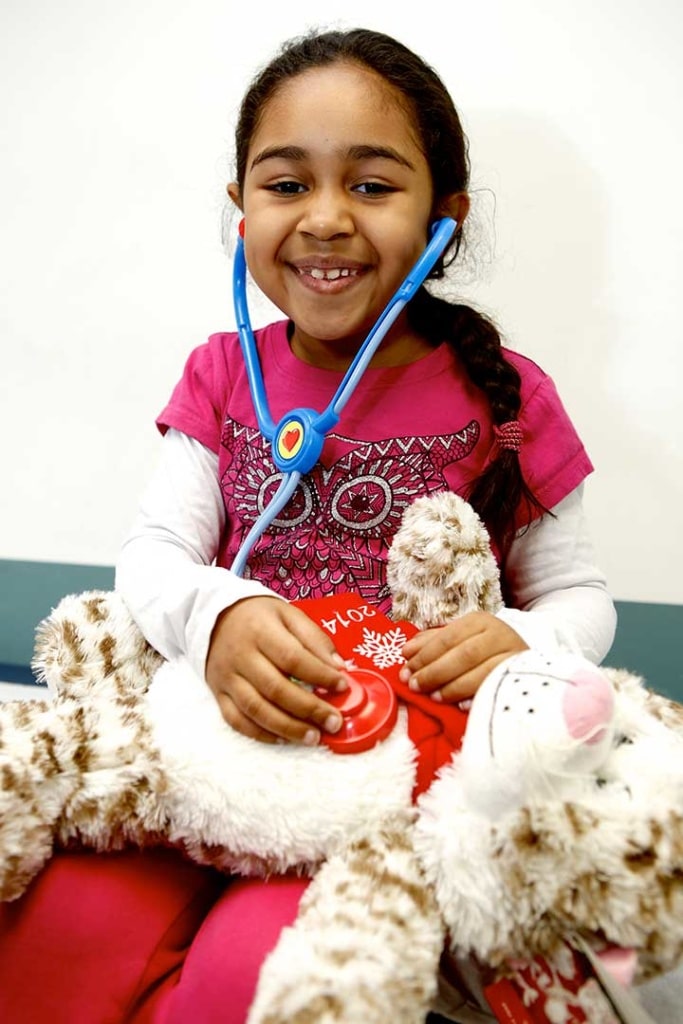A parent’s biggest job is to take care of his or her children. There are a lot of responsibilities: providing a warm home, healthy food and gentle parenting. In addition, we have to take them to the doctor. Every child makes many trips to the pediatrician or family doctor for well-child examinations and at least a sick visit or two.
For some children, the trip to the pediatrician is a fun event. For some it can be frightening. This varies as greatly as our children’s personalities and experiences vary. Some kids are comfortable at their doctor’s office and some children are wary of any person with whom they are not in daily contact. If your child cries at the doctor’s office, it’s OK! She is expressing her fear, either of an examination and immunization, or simply a fear of the unknown.
As parents, we often can spend hours trying to reason with our kids, attempting to convince them the doctor is not there to hurt them. But even when children have developed the ability to understand your logic, the emotional response can often outweigh the reason.
There are, however, plenty of ways to prepare your child for a fairly calm visit to the doctor’s office.
Try to spend some time talking with your child about a doctor’s job. You might say, “Doctors and nurses want to make sure you are growing well and to help keep you healthy.” Reassure your child you will stay right with him or her throughout the visit.
Play doctor with stuffed animals. Your child can use a toy medical kit on his animals, and meanwhile you can clear up any misunderstandings he might have about the doctor’s visit. For instance, if your son says to his animal, “You are getting a shot because you are bad,” you should gently correct him. He might instead tell his animal, “This special medicine will help you from getting very sick.” (By the way, a parent should never use a shot as a threat—not if you want to have a serene child when it’s vaccination time.)
Take the toy medical kit and animal to the appointment. Most offices will accommodate a teddy bear checkup.
Explain the steps of the visit. For instance, “After we check in at the desk, a nurse will ask you to take off your shoes and step on the scale to find out how much you weigh and how tall you are.” You and your child can practice these activities at home. When practicing, emphasize how easy these tasks are and what a good job your child did standing still.
Also, you can say, “When we go to the exam room, the doctor will use a stethoscope to listen to your heart and your lungs. There’s also a special cuff that measures your blood pressure; it feels like a tight hug or squeeze on your arm.” And: “The doctor has a special flashlight to check your ears and mouth.”
The more of the visit you can explain or practice in advance, the more chances your child has to ask questions, express his fears and be reassured that you will help him if he’s scared.
At the visit, ask your doctor if you can hold your child in your lap. Most of the exam can be completed in the comfort of your arms instead of on the exam table.

If your child is especially afraid of the stethoscope, rub her back as the physician is listening to her lungs. She will feel your hand rubbing and not necessarily the movement of the stethoscope.
Bring a new small toy your child can explore and play with while you are talking with the doctor and to use as a distraction during the exam. (Light spinners work great!)
If your child is to going to get an immunization, say, “You will feel a small pinch or poke.” Do not lie to your child. If you say it won’t hurt, and it does, he might not believe you or trust you in other situations.
Try not to bribe your child into holding still. Bribing usually backfires in the long run. After your checkup, take some time to have fun together at a park or playground.
Emergency room visits and hospitalizations are a different story. They tend to be unexpected—very! And preparing your child for what is going to happen is not usually what you are thinking about at that moment. The staff at most emergency rooms will help calm your child’s and your fears and take care of him, and you.
Some emergency rooms and hospitals have certified child life specialists, which is one of my jobs. A CCLS explains procedures to your child in terms she can understand. The child life specialist can also explain what the child will feel, hear, smell or taste. He or she will dispel myths and fears the child may imagine. Along with this, the CCLS may also teach your child some coping mechanisms, such as breathing slowly and deeply, counting to a certain number, or squeezing hands.
Visits to the doctor’s office don’t have to be ordeals if you prepare a little bit. And just remember, and remind your child, that doctors, nurses and other health care workers want to help him grow up healthy and strong.



